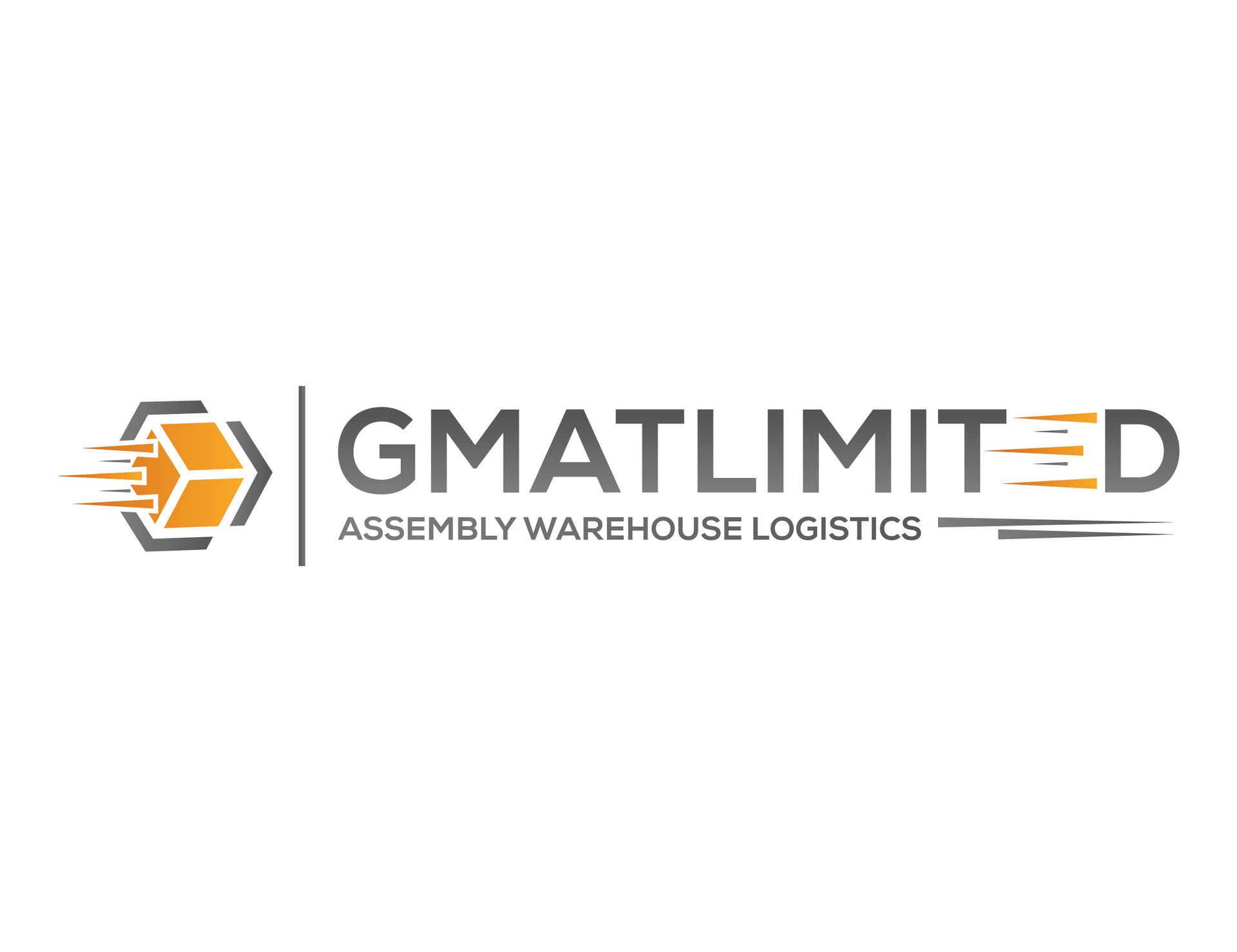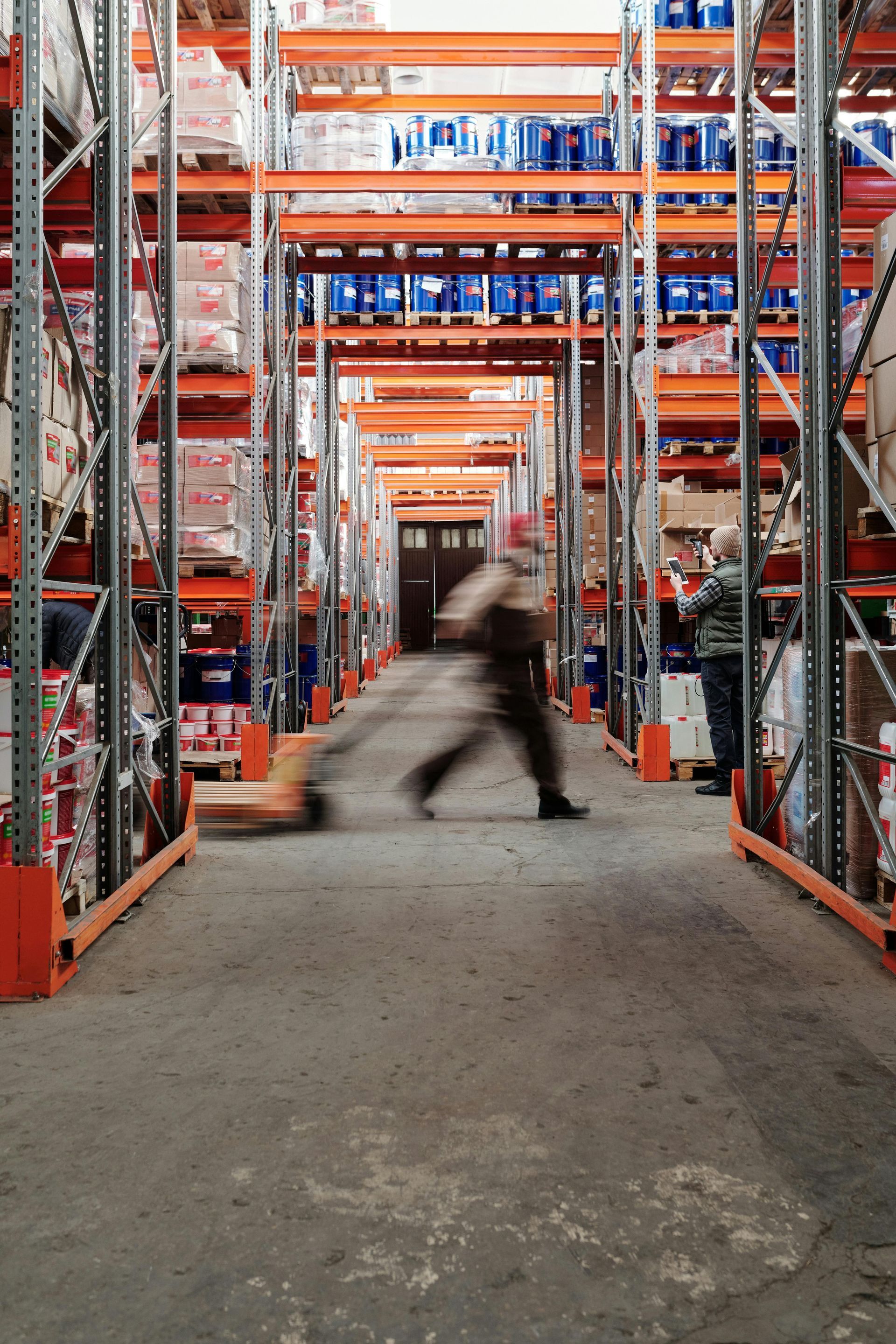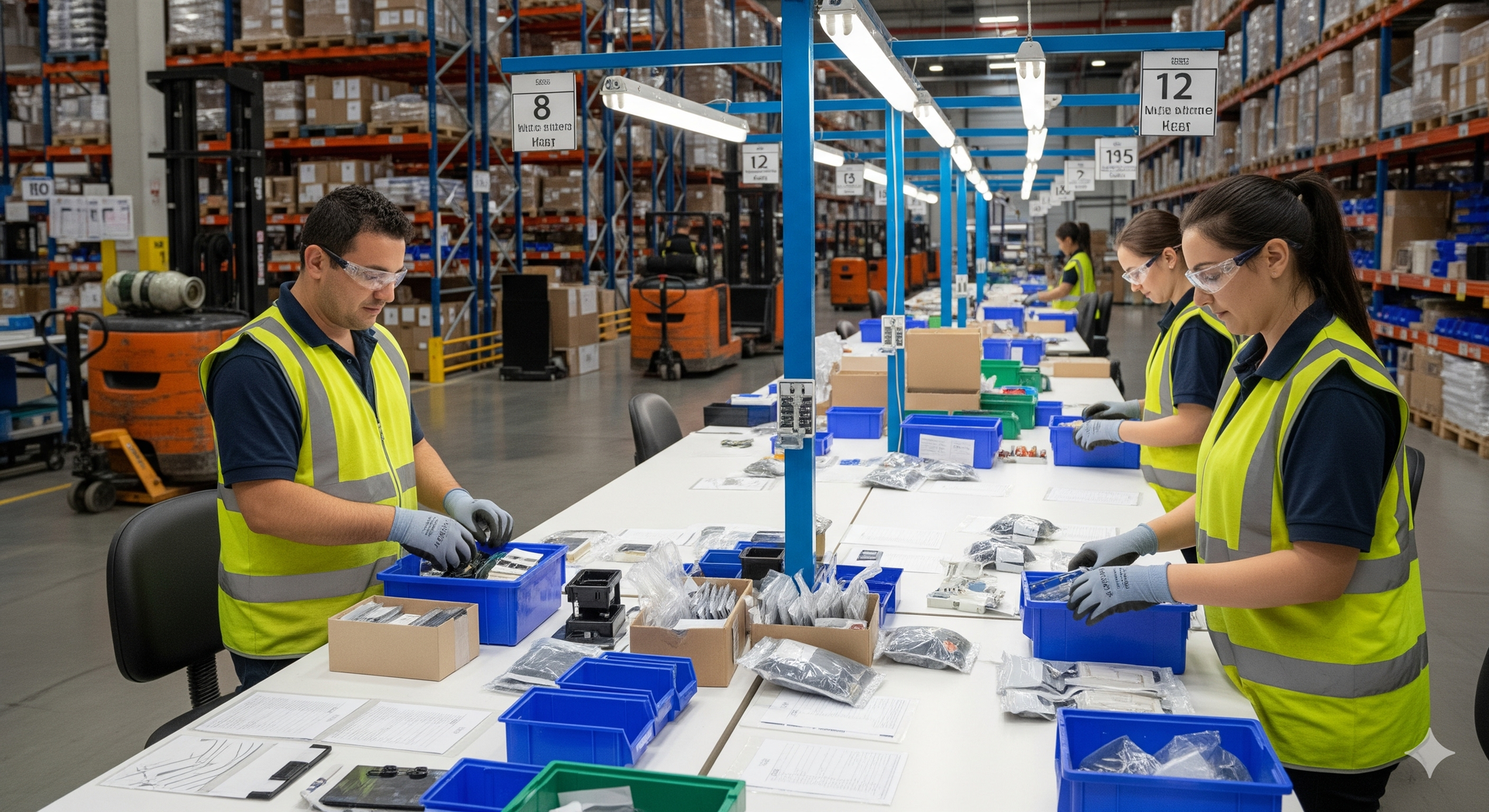How Warehousing Supports Online Retailers
The ecommerce boom has revolutionized the way people shop—but behind every seamless online purchase is a complex logistics network, with warehousing at its core. As online retailers strive to meet rising consumer expectations for speed, accuracy, and convenience, efficient warehousing has become a non-negotiable factor for success.
From storing inventory to managing returns, modern warehouses and fulfillment centers play a vital role in keeping the ecommerce engine running smoothly. This article dives into how warehousing supports online retailers, highlighting the key benefits and strategic advantages it offers.
Key Takeaways
- Warehousing enables ecommerce retailers to manage inventory efficiently, fulfill orders accurately, and scale operations seamlessly.
- Fulfillment centers differ from traditional warehouses by focusing on direct-to-consumer shipping, offering speed and flexibility.
- Technology in
inventory management helps avoid stockouts, reduce errors, and improve fulfillment speed.
- Strategic warehouse locations allow for
faster delivery and reduced shipping costs.
- Choosing the right warehousing solution, including 3PLs, is critical for ecommerce growth and customer satisfaction.
What is Warehousing in Ecommerce?
In the context of ecommerce, warehousing refers to the storage and handling of products before they are sold online and shipped to customers. These facilities may range from small in-house storage rooms to large third-party fulfillment centers.
Fulfillment Center vs Warehouse
While both serve to store goods, fulfillment centers are optimized for fast-moving, direct-to-consumer shipping. They typically integrate advanced technology and staff trained for high-volume, high-accuracy order processing. Traditional warehouses, on the other hand, may focus more on bulk storage and B2B distribution.
Inventory Management and Storage
Effective inventory management is the backbone of seamless ecommerce operations. Without it, even the most well-designed online storefront can crumble under the weight of stockouts, delays, and dissatisfied customers. Warehouses play a crucial role in organizing, tracking, and protecting inventory—ensuring that the right products are available at the right time.
Online retailers rely on modern warehouses to handle their stock with precision and speed. This is achieved through the use of integrated systems and technologies that streamline every aspect of storage and movement.
Key Systems That Power Inventory Management:
SKUs (Stock Keeping Units): Each product variant—such as color, size, or material—has a unique identifier. SKUs help staff and systems quickly identify products, track inventory levels, and analyze sales trends.
Barcodes and QR Codes: Scannable labels are used at every touchpoint—from receiving goods to shipping them—to minimize manual entry and errors. These codes ensure real-time updates in the system whenever items are picked, packed, or returned.
RFID Tags (Radio Frequency Identification): RFID technology enables wireless tracking of inventory, allowing workers to scan multiple items at once without direct line-of-sight. This speeds up cycle counts, improves accuracy, and is especially useful in high-volume environments.
Warehouse Management Systems (WMS): A WMS is the central command of warehouse operations. It automates inventory tracking, slotting (assigning products to specific locations), picking routes, and replenishment alerts. Integration with ecommerce platforms ensures synchronization between online orders and physical inventory.
Why Smart Inventory Management Matters:
Real-Time Visibility: With live tracking, retailers can always see what's in stock, what's on backorder, and which items are moving fastest. This level of transparency supports informed decision-making.
Stockout Prevention: Running out of a best-selling product can mean lost revenue and disappointed customers. Warehousing systems send alerts when stock levels dip, triggering restocking before it becomes a problem.
Avoiding Overstock: Excess inventory ties up capital and storage space. A good system helps forecast demand and maintain lean, efficient stock levels.
Optimized Picking Efficiency: Strategically placed inventory within the warehouse allows workers or automated systems to pick orders faster, reducing processing times and labor costs.
Improved Forecasting: Historical inventory data and sales trends feed into predictive analytics, helping businesses plan seasonal promotions, new launches, and purchasing cycles with greater confidence.
Reduced Human Error: Automation, scannable tracking, and system prompts reduce the risk of manual mistakes in inventory counting or order fulfillment.
In today’s competitive ecommerce landscape, inventory isn’t just about what you sell—it’s about how you manage what you have. A well-managed warehouse inventory system doesn’t just support operations; it enhances the entire customer experience. From accurate product availability to fast delivery and smooth returns, inventory management is where backend efficiency translates directly into customer satisfaction and brand trust.
Order Fulfillment Process
The order fulfillment process in ecommerce follows a structured sequence:
- Receiving: Products are delivered to the warehouse and checked for accuracy.
- Storage: Items are shelved systematically for easy access.
- Picking: Staff or automated systems locate and pick items based on orders.
- Packing: Orders are securely packed with appropriate labels and shipping materials.
- Shipping: Packages are handed off to carriers for last-mile delivery.
Technologies like batch picking, zone picking, and wave picking optimize these steps, reducing labor time and errors.
Integration with shipping partners ensures quick delivery and cost-effective shipping and packing for online stores.
Returns Handling
In online retail, a robust returns management system is crucial. Warehouses handle returns by:
- Inspecting the returned items
- Restocking resellable goods
- Processing refunds or exchanges
- Managing damaged or unsellable inventory
Efficient returns processing improves customer satisfaction, builds trust, and reduces loss from returns fraud or errors.
Benefits of Warehousing for Online Retailers
Warehousing is more than just a place to store products—it’s a strategic advantage that enables online retailers to operate with speed, accuracy, and confidence.
Whether you’re a growing ecommerce brand or an established online store, leveraging modern warehousing solutions can have a significant impact on your bottom line and customer satisfaction. Here are the top ecommerce warehousing benefits that drive business success:
1. Faster Delivery Times
Speed is a major factor in online shopping. Today’s consumers expect rapid shipping—often within one or two days. Strategically located warehouses close to major customer hubs allow retailers to cut down on last-mile delivery time. This means:
- Same-day or 2-day shipping options become feasible
- Fewer delays due to long-distance transportation
- Enhanced customer satisfaction and brand loyalty
By partnering with a warehouse or fulfillment center near key markets, online businesses can meet high delivery expectations without inflating shipping costs.
2. Scalability
One of the biggest challenges in ecommerce is handling growth. Whether you’re scaling up for a seasonal spike or expanding into new regions, warehousing gives you the flexibility to grow without the burden of investing in your own storage facilities or staff.
- Fulfillment partners can quickly adjust to volume increases
- No need for large upfront capital in infrastructure
- Space and resources can scale up or down with demand
This elasticity ensures you stay agile and profitable—even as your operations expand.
3. Cost Efficiency
Operating your own warehouse can be expensive. Outsourcing your inventory storage and order fulfillment allows you to take advantage of economies of scale. Warehousing solutions help reduce overhead through:
- Shared resources and space in fulfillment centers
- Lower labor costs and reduced need for in-house staff
- Consolidated shipments and discounted bulk shipping rates
- Negotiated rates with major carriers due to volume
These cost savings free up capital that can be reinvested into marketing, product development, or customer experience.
4. Improved Accuracy
Every missed pick or wrong shipment is a cost to your business and a hit to your reputation. Warehousing providers use sophisticated technology and quality control systems to minimize human error and improve operational accuracy.
- Barcode scanning and RFID tracking for order verification
- Automated picking systems reduce mispicks and delays
- Real-time inventory data helps prevent overselling
- Quality checks ensure packaging and labeling meet brand standards
This level of accuracy results in fewer returns, more positive reviews, and higher repeat purchase rates.
5. Focus on Core Activities
Managing your own logistics can be a drain on time and resources—especially for small to midsize ecommerce businesses. By outsourcing warehousing, you can shift focus back to what matters most:
- Building your brand and growing your audience
- Enhancing your product offerings
- Running promotions and boosting conversions
- Providing exceptional customer support
Letting experienced logistics professionals handle inventory, packing, and shipping means you can operate more efficiently and strategically.
Choosing the Right Warehousing Solution
Selecting the right warehousing partner or strategy involves several considerations:
- Location: Choose warehouses near major markets to cut down on shipping time.
- Technology Integration: Ensure your ecommerce platform syncs with the warehouse’s systems for real-time data.
- Capacity: Make sure the warehouse can accommodate seasonal peaks and business growth.
- Service Options: Look for added services like kitting, custom packaging, or B2B distribution.
- 3PL Partnerships: Working with experienced
third-party logistics providers offers flexibility and expertise.
A multi-warehouse strategy can support both domestic and international sales, ensuring global reach.
Frequently Asked Questions (FAQ)
1. What’s the difference between a warehouse and a fulfillment center?
A warehouse stores products in bulk, often for long-term storage, while a fulfillment center is optimized for fast, direct-to-consumer order processing, including packing and shipping.
2. How can warehousing help reduce shipping costs?
By consolidating inventory in strategic locations, warehouses reduce delivery distances and allow retailers to negotiate better rates with carriers, resulting in lower shipping costs.
3. Why is inventory management important in ecommerce?
Proper warehouse inventory management ensures product availability, prevents overselling, and improves order accuracy—leading to a better customer experience and increased profitability.
4. What are 3PL services, and should I use one?
Third-party logistics (3PL) services handle storage, order fulfillment, and shipping on your behalf. They’re ideal for ecommerce businesses looking to outsource logistics and scale quickly without investing in physical infrastructure.
5. How do warehouses handle ecommerce returns?
Returns are received, inspected for quality, restocked if resellable, and logged into the system. Refunds or replacements are processed based on your return policy, ensuring fast resolution for the customer.
GMATLIMITED: Your Partner in Scalable Warehousing
At GMATLIMITED, we specialize in ecommerce logistics solutions that empower online retailers to scale efficiently. Our warehousing services are designed to simplify your fulfillment process, reduce costs, and exceed customer expectations.
Whether you're a small shop expanding nationwide or an established brand looking for flexible fulfillment, we provide the infrastructure and support to make it happen.
Let us handle your inventory storage, order processing, shipping, and returns—so you can focus on growing your business.
Ready to scale your ecommerce operations with reliable warehousing?
Contact GMATLIMITED today to learn how our tailored solutions can streamline your logistics, improve delivery times, and boost customer satisfaction. Our experts are here to help you build a smarter, faster, and more efficient online retail business.













